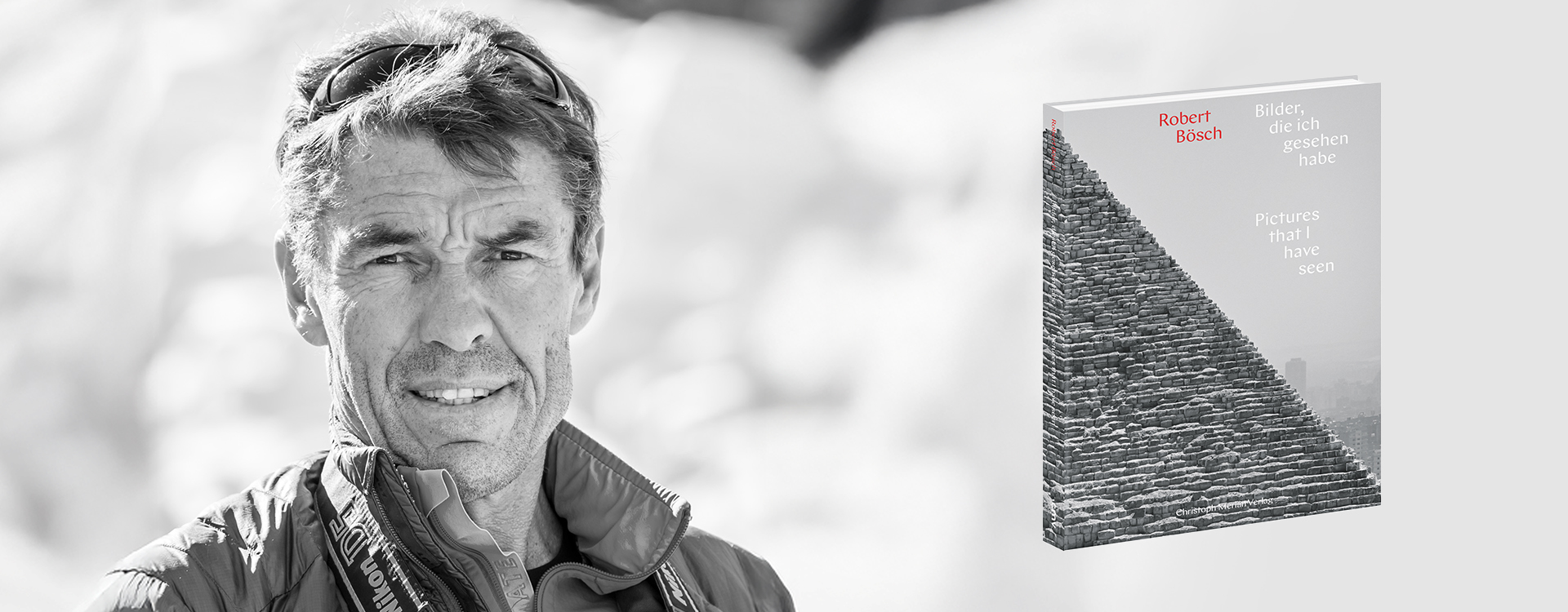The internationally renowned artist and founder of the aid organisation Smiling Gecko Hannes Schmid is a visionary who knows how to combine art and his social commitment in Cambodia in a unique way. Schmid, who has received numerous awards for his photographic work, can look back on more than five decades of creative work that has taken him all over the world. Whether for fashion shoots in the jungles of Borneo, as a witness to the extraordinary life of the Mennonites in Belize or as part of a Chinese Taoist ritual street opera in Singapore: Hannes Schmid was up close and personal with his camera, creating images that tell captivating stories. His reinterpretations of the legendary “Malboro Man” for Philip Morris, which characterised the brand’s image between 1993 and 2002, are also worthy of mention here.
We met Hannes Schmid in the run-up to “Photo Münsingen 2024”, where he is presenting selected works from his archive of more than 70,000 photographs of rock stars. We spoke to him about his photography and his Smiling Gecko aid project.
You are a trained electrician, how did you get into photography?
Well, that was probably more of a coincidence, or should I say fate? In 1968, I went to South Africa with a few friends from Toggenburg to work there as an electrician. The country was so completely different from anything I had seen before. I was fascinated and wanted to record my impressions. So I bought myself a camera. I always sent the films home to Switzerland because I couldn’t find anyone locally who could develop them. My sister then gave me amateurish feedback in letters about how the photo negatives looked to her. I didn’t see a single one of my photos myself in the first four years. And to this day, I am much more interested in the act of photographing than the result itself. My pictures may have a strong effect on the viewer, but of course they don’t necessarily represent what I felt at the moment I pressed the shutter release.
Why did you travel to Africa for an extended period of time and decide against an “ordinary life” in Switzerland?
I am a very curious person. At some point, our tranquil Switzerland became too small for me. That’s why I made the move south. Emigrating was a shock for my parents, but I wanted to experience something and was never afraid of my decisions. Even if some of them turned out to be hair-raising. For example, my idea in 1974 to go in search of the billionaire Micheal Rockefeller, who had not returned from an expedition to the cannibal tribes of the Danis and Lanis in Irian Jaya (West Papua, Indonesia). I was fascinated by the story and signed on as an assistant cook on a ship that took me to the coast. There I went into the jungle and was captured by the cannibals myself a short time later. They locked me in a pigsty and beat me again and again. Fortunately, I was able to escape at some point. Today I know that I only survived because the warriors didn’t consider me male enough to kill me. I was found on a beach. Severely ill with typhoid and malaria and emaciated to 32 kilos. It took a year for me to recover from this adventure.
Between 1978 and 1984, you accompanied over 250 rock bands on tour as a photographer. How did you manage to win over so many legendary bands for your photography and what challenges did you face?
Through a friend, I had the opportunity to meet the manager of the band Status Quo backstage at a concert. When he learnt that I had previously been held captive by cannibals, he said I had the right spirit and had to photograph his band. The musicians themselves had a strong aversion to photographers, but my cannibal story helped me with them too. That’s how I got into the music business. I was never a fan and couldn’t do much with the music. But I was interested in the people and their attitudes. Back then, rock music was a revolution against conservative society. I liked that. During the tours, I became part of the crews and often enough also part of the families. I think that’s what made my photos so intimate and authentic.

What special moments or encounters do you particularly remember?
We don’t have that much time. (Smiles.) But perhaps I can say that I never worked a day in my life as a photographer, either then or afterwards. I did what I love and so every day was special! I met many inspiring personalities along the way, including Freddie Mercury, Bob Marley and Agneta Fältskog from ABBA. I had more than just a professional relationship with all of them.
What are the characteristics of good photos for you? Is there a magic formula for creating a good photo? And what is important to you when it comes to designing books?
You have to live photography, not just experience it! You have to become part of it. This attitude also helps when designing books. They should not document, but animate. I think we have succeeded very well with the design of the new book “Time of Icons, Icons of Time”. I was very impressed when I was able to hold the first copy of the limited edition in my hands in Mönchaltdorf. The flat pages of the flatbook binding allowed us to make the images significantly larger and therefore even more vivid. I was also immediately impressed by the chosen matt paper and the cover finishes. To the Premium Flat photo book

In 2012, you founded Smiling Gecko in Switzerland. An NGO that paves the way to a better future for the extremely poor rural population in Cambodia through education. We could quote a lot from your impressive website here, but let’s talk about this topic in person.
What inspired you to bring Smiling Gecko to life?
The trigger was my first fateful encounter with a Cambodian begging doll. A little girl whose father must have completely disfigured the child’s face and upper body with a Bunsen burner in order to be able to beg for large sums of money. Even I had never seen anything like it in my life. I followed up the story and came across numerous similar cases in Cambodia’s capital Phnom Penh. What hardship do people have to suffer to do this to their children? I went to the city’s slums and lived on a rubbish dump for a while. I was very touched by the people I met there. Without further ado, I decided to put 250 children from the rubbish dump into a state school. I paid their school fees and bought them school uniforms. After a while, however, I realised that my children were not learning anything at school. Quite simply because this school – like most schools in the country – was simply far too bad. So in 2014, I started Smiling Gecko in Cambodia. I wanted to lift the slum families out of misery and give the children a proper education. Together with partners, I bought the first 9 hectares of land north of Phnom Penh. On the Smiling Gecko Educational Campus, we now have, among other things, a western-style school, craft training centres, a functioning agricultural business and, with the Farmhouse Resort, one of the world’s leading educational facilities.
That sounds spectacular. Can you share any concrete success stories or impact Smiling Gecko has had on the lives of people in Cambodia?
Smiling Gecko has grown a lot since it was founded! Not just us as an organisation, but also the children, some of whom have been going to school with us for seven years now. Thanks to the good school nutrition and health care we provide, these children are up to 20% taller than children of a similar age in the region. The children are socially educated, independent and have goals. Women and girls are still oppressed in Cambodia, for example. At Smiling Gecko they learn to say no. That makes me proud. But above all, it also makes the children and their families proud.

How can people who want to support Smiling Gecko help or get involved?
There are various ways in which you can support Smiling Gecko. One way, for example, is our scholarship programme, in which sponsors pay a child’s school fees. For CHF 3,600 at present, the complete learning programme, medical care, individual hygiene and school meals for a child are covered for a year. Of course, we are also happy to receive one-off, smaller donations.
I would like to get involved: Was sie tun können – Smiling Gecko
Weitere Informationen zu Smiling Gecko
Eine Übersicht über unser Engagement – Smiling Gecko





